Full Name Jenny Holzer Role Artist | Name Jenny Holzer Nationality American Movies About Jenny Holzer | |
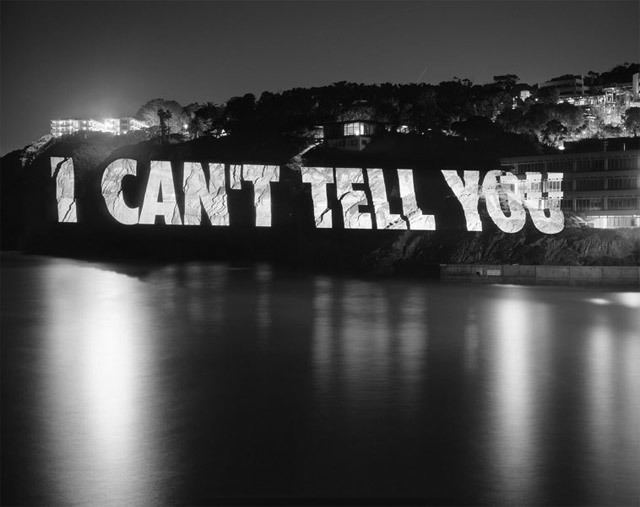 | ||
Artwork Electric Sign, Granite Bench, Laments (I Want to Live...) Similar People Barbara Kruger, Rosemarie Trockel, Damien Hirst, Henri Cole, Robert Storr | ||
Jenny holzer writing difficulty art21 exclusive
Jenny Holzer (born July 29, 1950, Gallipolis, Ohio) is an American neo-conceptual artist, based in Hoosick Falls, New York. The main focus of her work is the delivery of words and ideas in public spaces.
Contents
- Jenny holzer writing difficulty art21 exclusive
- Jenny holzer programming art21 exclusive
- Education
- Work
- Selected works
- Permanent displays
- Mixed Media Screen Prints
- Dance
- Books
- Exhibitions
- Recognition
- Personal life
- References
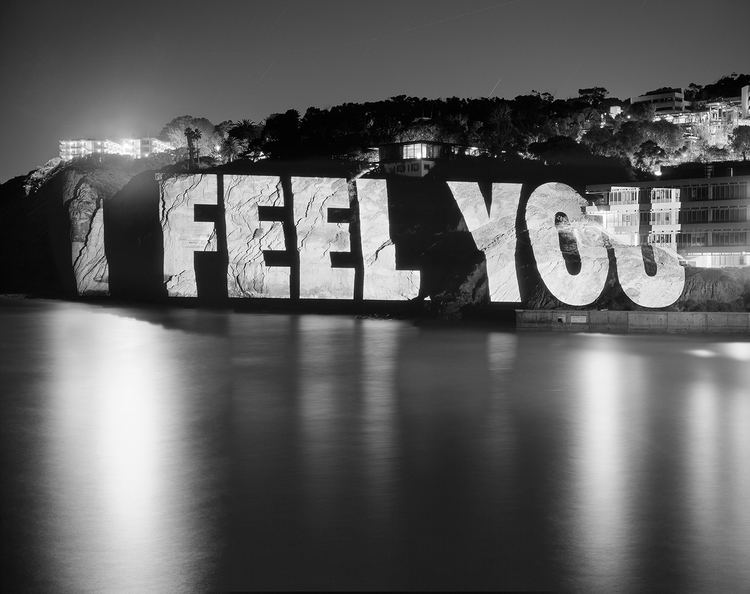
Holzer belongs to the feminist branch of a generation of artists that emerged around 1980, looking for new ways to make narrative or commentary an implicit part of visual objects. Her contemporaries include Barbara Kruger, Cindy Sherman, Sarah Charlesworth, and Louise Lawler.
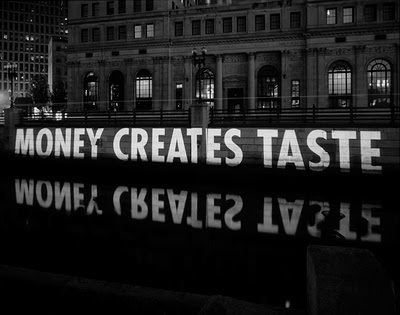
The public dimension is integral to Holzer's work. Her large-scale installations have included advertising billboards, projections on buildings and other architectural structures, and illuminated electronic displays. LED signs have become her most visible medium, although her diverse practice incorporates a wide array of media including street posters, painted signs, stone benches, paintings, photographs, sound, video, projections, the Internet, and a race car for BMW. Text-based light projections have been central to Holzer’s practice since 1996. As of 2010, her LED signs have become more sculptural. Holzer is no longer the author of her texts, and in the ensuing years, she returned to her roots by painting.
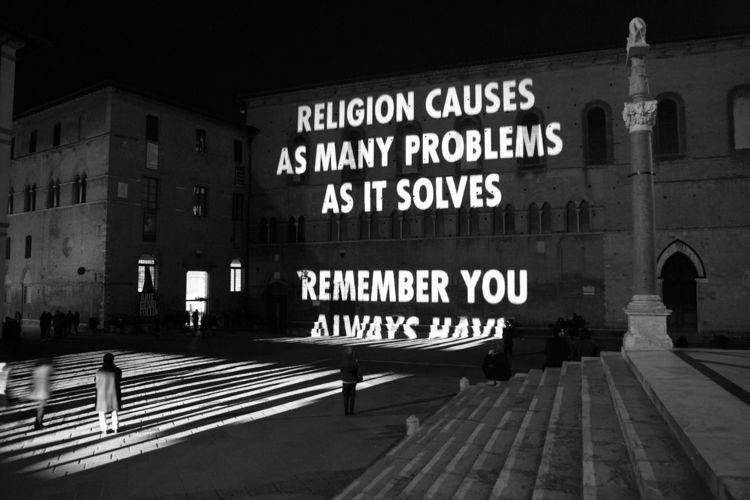
Jenny holzer programming art21 exclusive
Education
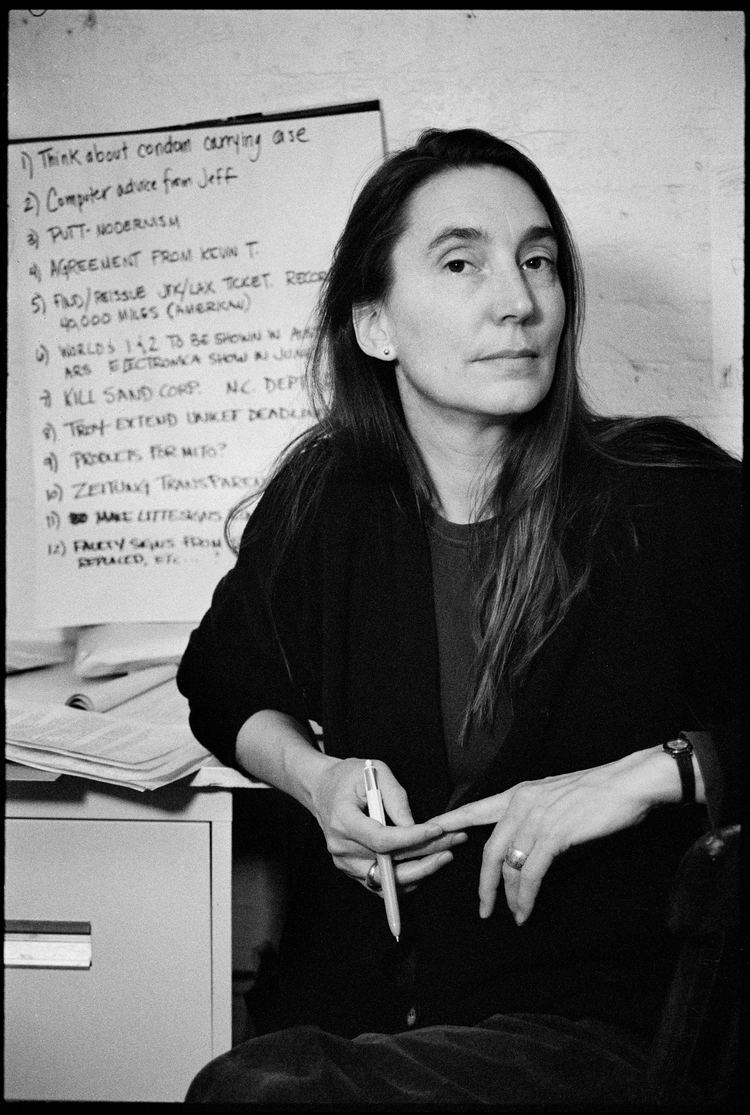
Originally aspiring to become an abstract painter, Holzer's studies included general art courses at Duke University in Durham, North Carolina (1968–1970), and then painting, printmaking and drawing at the University of Chicago before completing her BFA at Ohio University, Athens (1972). In 1974, Holzer took summer courses at the Rhode Island School of Design, and entered its MFA program in 1975. She moved to Manhattan in 1976, joined the Whitney Museum's independent study program and began her first work with language, installation and public art. She also was an active member of the artists group Colab.
Work
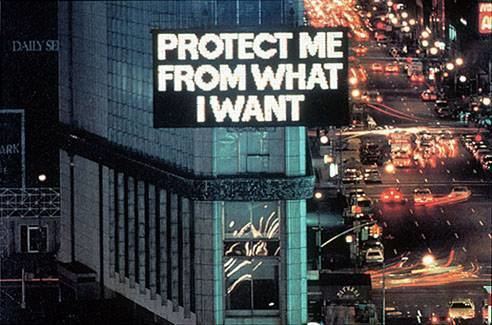
Holzer's initial public works, Truisms (1977–79), are among her best-known. They first appeared as anonymous broadsheets that she printed in black italic script on white paper and wheat-pasted to buildings, walls and fences in and around Manhattan. These one-liners are a distillation of an erudite reading list from the Whitney Independent Study Program, where she was a student. She printed other Truisms on posters, T-shirts and stickers, and carved them into stone benches. In late 1980, Holzer's mail art and street leaflets were included in the exhibition Social Strategies by Women Artists at London's Institute of Contemporary Arts, curated by Lucy Lippard.
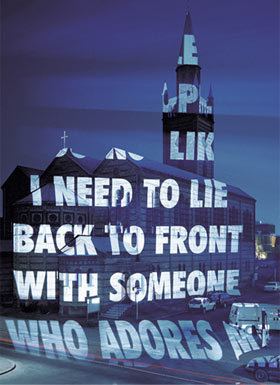
In 1981, Holzer initiated the Living series, printed on aluminum and bronze plaques, the presentation format used by medical and government buildings. The Living series addressed the necessities of daily life: eating, breathing, sleeping, and human relationships. Her bland, short instructions were accompanied by paintings by American artist Peter Nadin, whose portraits of men and women attached to metal posts further articulated the emptiness of both life and message in the information age.
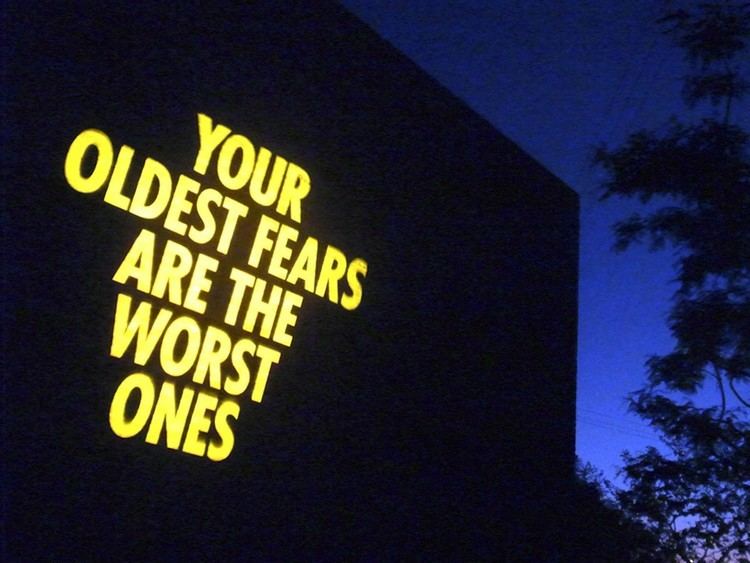
The medium of modern computer systems became an important component in Holzer's work in 1982, when the artist installed her first large electronic sign on the Spectacolor board in New York's Times Square. Sponsored by the Public Art Fund program, the use of light-emitting diodes (LEDs) allowed Holzer to reach a larger audience. The texts in her subsequent Survival series, compiled in 1983-85, speak to the great pain, delight, and ridiculousness of living in contemporary society. She began working with stone in 1986; for her exhibition that year at the Barbara Gladstone Gallery in New York, Holzer introduced a total environment where viewers were confronted with the relentless visual buzz of a horizontal LED sign and stone benches leading up to an electronic altar. Continuing this practice, her installation at the Guggenheim Museum in 1989 featured a 163-meter-long sign forming a continuous circle spiraling up a parapet wall.
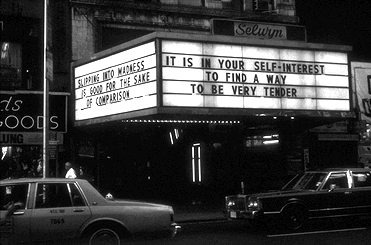
In 1989, Holzer became the first female artist chosen to represent the United States at the Venice Biennale in Italy. At the 44th Biennale in 1990, her LED signboards and marble benches occupied a solemn and austere exhibition space in the American Pavilion; she also designed posters, hats, and T-shirts to be sold in the streets of Venice. The installation, Mother and Child, won Holzer the Leone D'Oro for best pavilion. The original installation is retained in its entirety in the collection of the Albright-Knox Art Gallery in Buffalo, the organizing institution for the American Pavilion at the 1990 Biennale.
While Holzer wrote the texts for the bulk of her work between 1977 and 2001, since 1993, she has mainly been using texts written by others, including literary texts from such authors as Polish Nobel laureate Wislawa Szymborska, Henri Cole (USA), Elfriede Jelinek (Austria), Fadhil Al Azzawi (Iraq), Yehuda Amichai (Israel), Mahmoud Darwish (Palestine), Khawla Dunia (Syria), and Mohja Kahf (Syrian American). As of 2010, Holzer's work has been focused on government documents, concerning Iraq and the Middle East. Using texts from a much different context, more recent projects have involved the use of redacted government documents, and passages from declassified U.S. Army documents from the war in Iraq. For example, a large LED work presents excerpts from the minutes of interrogations of American soldiers accused of committing human rights violations and war crimes in Abu Ghraib prison — making what was once secret, public and exposing the "military-commercial-entertainment complex."
Holzer's work often speaks of violence, oppression, sexuality, feminism, power, war and death; and the artist often utilizes the rhetoric of modern information systems to address the politics of discourse. Her main concern is to enlighten, bringing to light something thought in silence and meant to remain hidden.
Critic Samito Jalbuena has written that the artist's public use of language and ideas often creates shocking juxtapositions — commenting on sexual identity and gender relations (“Sex Differences Are Here To Stay”) on an unassuming New York movie theater marquee, for example — and sometimes extends to flights of formal outrage (such as “Abuse Of Power Comes As No Surprise” in lights over Times Square).
Selected works
Permanent displays
Mixed Media Screen Prints
At the Massachusetts Museum of Contemporary Art in 2007, Holzer presented a series of mixed media silk-screen prints; each of the 15 same-size, medium-large canvases, stained purple or brown, bears an all-black, silk-screened reproduction of a PowerPoint diagram used in 2002 to brief President Bush, Donald Rumsfeld and others on the United States Central Command’s plan for invading Iraq. Holzer found these documents at the Web site of the independent, nongovernmental National Security Archive (nsarchive.org), which obtained them through the Freedom of Information Act, and has used them as source material for her work since 2004. Other paintings depict confessions or letters from prisoners of all kinds and their families (parents pleading that the Army discharge rather than court-martial their sons); autopsy and interrogation reports; or exchanges concerning torture, as well as prisoners’ handprints and maps of Baghdad. The censor’s marks are unmodified and the large sections of obscured text leave only sentence fragments or single words, echoes of the original content. Holzer concentrates on documents that have been partially or almost completely redacted with censor's marks.
Based on a declassified report on US special forces' activity at a base in Gardez, Afghanistan, a 2014 series of paintings explores the story of Jamal Nasser, an 18-year-old Afghan soldier who died in US military custody.
Dance
Holzer’s first dance project was in 1985, “Holzer Duet … Truisms” with Bill T. Jones. In 2010, she collaborated with choreographer Miguel Gutierrez for the Co-Lab series at the Institute of Contemporary Art, Boston. There were 10 dancers who performed in a room in which Holzer's words were projected along the walls.
Books
Holzer has also published several books, including:
Exhibitions
Solo exhibitions of Holzer's work have been held in institutions such as the Fondation Beyeler in Riehen/Basel and the Whitney Museum of American Art, New York (2009), and the Museum of Contemporary Art, Chicago (2008). Other solo shows include Institute of Contemporary Arts, London (1988); Dia Art Foundation, New York (1989); Guggenheim Museum, New York (1989); Walker Art Center, Minneapolis (1991); Hamburger Kunsthalle, Hamburg (2000); Neue Nationalgalerie, Berlin (2001, 2011); Barbican Art Gallery, London (2006); BALTIC Centre for Contemporary Art, Gateshead (2010), and DHC/ART Foundation for Contemporary Art (2010). She has also participated in Documenta 8, Kassel (1987), as wells in group exhibitions in major institutions such as the Stedelijk Museum, Den Bosch, The Nederlands, the National Gallery of Canada, Ottawa, and the Museum of Modern Art, New York. Holzer will participate in the 9th Gwangju Biennale (2012). According to the website for the 2015 'Dismaland' art installation led by Banksy, Holzer contributed works to the project.
Holzer had several solo exhibitions in the past several years. In 2014 her work was in Jenny Holzer: Projecto Parede at the Museu de Arte Moderna (MAM) of São Paulo in Brazil in 2014 as well as Jenny Holzer: Dust Paintings at Cheim & Read in Chelsea, New York which exemplified her use of government documents as a source for her work. In 2015 she was in Jenny Holzer: Softer Targets at the Hauser & Wirth, Somerset in Bruton, UK which features new work and other pieces from the past three decades. Also in 2015 she had a solo exhibition at the Barbara Kreakow Gallery in Boston, Massachusetts as well as War Paintings at Museo Correr in Venice, Italy. Then in the winter of 2017 at Alden Projects in New York, Holzer had the solo exhibition Rejoice! Our Times Are Intolerble: Jenny Holzer’s Street Posters which showed her language-based poster that were pasted on the streets of New York.
Jenny Holzer and Christian Lemmerz: Lust is on exhibition on view from February 2017 to May 2017 at the Randers Kunstmuseum in Randers, Denmark. Holzer is also featured in the exhibition Woman Now at the Workhouse Arts Center in Lorton, Virginia, on view from January 2017 to April 2017; her work is shown alongside Andy Warhol and Joseph Beuys, among others, in the exhibition Creature at The Broad in Los Angeles California from November 2016 to March 2017. In February 2017 she was also in Palm Springs Popup exhibition at Ikon Ltd. In Santa Monica alongside artists such as Richard Prince, Ellsworth Kelly, and Bruce Nauman. From January 2017 through February 2017 she was in the Fischl, Holzer, Prince, Salle, Sherman exhibition at the Skarstedt Gallery in Chelsea, New York. Also in the summer of 2016 Holzer was featured in THE EIGHTIES: A Decade of Extremes exhibition at the Museum of Contemporary Art Antwerp in Antwerp, Belgium which explored the New York art scene in the eighties.
Jenny Holzer is represented in New York by Cheim & Read, in Berlin and London by Sprüth Magers, and in Paris by Yvon Lambert Gallery.[1]
Recognition
In addition to winning the Golden Lion for her work at the 1990 Venice Biennale, Holzer has received several other prestigious awards, including the Art Institute of Chicago's Blair Award (1982); the Skowhegan Medal for Installation (1994); the Crystal Award from the World Economic Forum (1996); the Berlin Prize fellowship (2000); the Order of Arts and Letters diploma of Chevalier from the French government (2002) and the Barnard Medal of Distinction (2011). In 2010, Holzer received the Distinguished Women in the Arts Award from the Museum of Contemporary Art, Los Angeles (MOCA). The annual award – recognizing women for their leadership and innovation in the visual arts, dance, music, and literature – is a bronze plaque originally designed by the artist in 1994, featuring one of her Truisms: “It is in your self-interest to find a way to be very tender.” Holzer also holds honorary degrees from Williams College, the Rhode Island School of Design, The New School, and Smith College.
Personal life
Holzer maintains a loft on Eldridge Street in Manhattan and a studio in Brooklyn. She bought a farm in the early 1980s. In her private collection, she has works by Alice Neel, Kiki Smith, Nancy Spero, and Louise Bourgeois.
